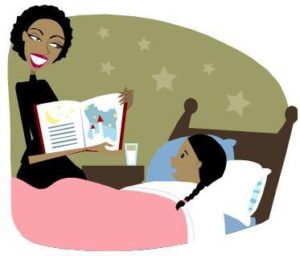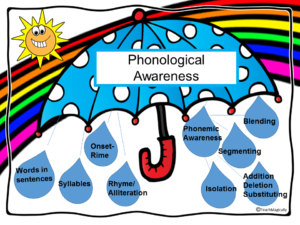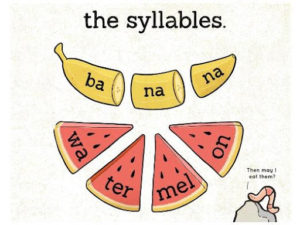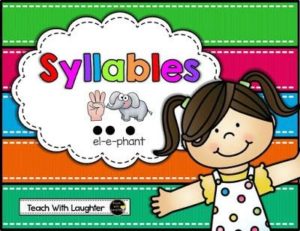We all know that reading and writing are important skills – not just for school, but in life. Reading and writing opens the door for education, yes, and learning; but also for stimulating the imagination, for communicating with people near and far, for expressing personal thoughts and ideas – a platform for venting, or thinking, or sharing, or imagining.
So, what can we do to prepare our children for learning to read and write?
First, exposure to books! Lots of exposure to books. Get your child familiar with print knowledge, such as
- Explore holding books upside-down versus right-way-up
Make them aware that print has meaning – for example, using your finger as your read the words - Demonstrate that you read left-to-right (in English)
Second, from an early age you can build up your child’s phonological awareness skills, which are the building blocks of literacy learning.
Phonological Awareness Skills
Ref: https://www.teachmagically.com/2016/11/phonological-awareness.html
As covered in an earlier post by Shannon Mackintosh, phonological awareness is the ability to consciously hear and manipulate sounds in words. It’s a thinking skill – a way of thinking about and playing with words, that sets the foundation for later literacy development. Skills include:
- Rhyming
- Syllabification
- Alliteration
- Sound and word discrimination
- Onset and rime
See Shannon’s post: Literacy and Speech for more detail about why phonological awareness is important for literacy and how it can link to speech difficulties.
You can start teaching phonological awareness skills in play and routines from toddler-hood. As a starting point, you don’t need pen or paper. GoodReads has a list of recommended children’s books that can help build up these skills: https://www.goodreads.com/shelf/show/phonemic-awareness
Rhyming
- Recognizing and identifying when words rhyme
- Generating, making up and playing with words that rhyme
Expose your child to lots of nursery rhymes and songs (e.g. e.g. Incy Wincy Spider, Twinkle Twinkle Little Star), and rhyming story books (e.g. all of Dr Seuss, Lynley Dodd’s Hairy Maclary series… – there are many great rhyming books out there!). As your child gets older:
- Point out how the words sound the same at the end, to make your child consciously aware of what rhyming is
- With familiar books, use pausing to get your child to finish the sentences by saying the rhyming parts
(e.g. “The cat in a ….?”) - Playfully make up your own silly rhymes as you reread the story with them
(e.g. “The cat in a ….bat?, No, no the cat in a …mat? Oh, the cat in a hat!”) - Beyond books, do rhyming games like making up silly nicknames for people, or silly songs and rhymes in games, or I spy games using rhyming.
(e.g. “Silly Milly” “I spy something green that rhymes with/sounds like…glass. Grass!”)
Syllabification
- Breaking words up into syllables (clap the beats in words)
- Blending syllables together to make words
Ref: http://phomaxia.com/Six-types-of-syllables/
Ref: http://clipartportal.com/syllables-clipart-4/
This is also a useful skill if your child has speech difficulties.
You can use books to point out when you come across long words or short words. Talk about how syllables are the beats in words, and when you can clap out the beats it can help you say the word better.
- When you’re reading with your child, pause occasionally when you come across long words and clap, tap, or stamp these words out with your child
e.g. “The hungry… ca-ter-pi-llar” - When you call your children’s names, such as to the table or when asking them for help, or talking about who’s turn it is in a game, you can break the names up in a sing-song way.
e.g. “Da…nny! Di-nner!” “It’s … So-phi-a’s turn!” - Physically clap, jump, drum or stamp out syllables in words – you can use family names, random objects you might have in a bag or a game like Mr Potatohead, motivating food, character names of favourite shows or books
e.g. “I found spi-der-man” - Sort objects (or toys, pictures of favourite characters) according to how many syllables are in their name; you can have shoe boxes with the numbers 1, 2, 3 and have your child brainstorm where each toy/object goes
e.g. box 3: 3 paces away, stamp “cro-co-dile” and drop the crocodile in the box; you can make ‘mistakes’ to be ‘caught out’, like put ‘dog’ in the 3 syllable box.
Alliteration
- Recognizing and identifying the first (and/or last) sounds in words
- Sorting and generating words that begin (and/or end) with the same sounds
Again, there are lots of books with alliterative titles and names.
- When you read with your child, pause to words that begin with the same sound. For children learning the alphabet, highlight the beginning sound (and point to the first letters on the words)
e.g. “Oh, I found four words that all start with the ff! FF-four ff-famished ff-foxes ff-fosdyke!” - When you come across alliterative phrases, you can play with it – add an extra word that starts with the same sound, see if your child notices
e.g “Fee fie foe fum fumble!” - Play with tongue twisters, but note or identify aloud what sound all the words begin with so your child consciously thinks about it
“Peter Piper picked a peck of pickled peckers… Hmm, what other name begins with p? Maybe… Patrick! Patrick Peter Piper….” - Play I spy or finding games, but with a focus on trying to find things that starts with the same sound.
e.g. “I spy something starting with b… ball! Now you find something starting with b.” “Mouse? Does that start with b-b-b? Mmmm- mouse, no, that’s a different beginning sound! Oh dear, let’s try again.” - Sort items like toys, objects, into groups that begin with the same or different sounds – you can post or feed the objects to a ‘same’ box/animal and a ‘different’ box/animal.
- You can write the letter the ‘same’ toys start with, to reinforce some letter-sound learning.
e.g. “Here’s our “D” box! Mad Monster is looking for… d-d-d dog! Digger! Doll! Monkey — wait, does monkey start with d? Mmmmonkey, no that starts with m! That’s a different beginning sound. Which monster gets to eat Monkey?” - Play with nicknames using alliteration
e.g. Happy Hannah, laughing Liam, exciting Emma
Ezmi Brits
Speech Language Therapist – Cornerstone Therapy













